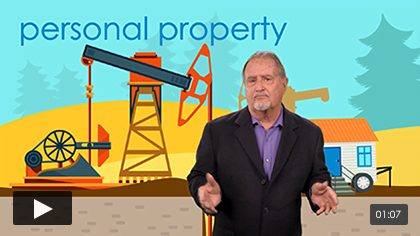Mortgage rates in 2022
Mortgage interest rates have earned their spot as 2022’s news story of the year. In fact, 71% of respondents in a recent firsttuesday poll singled out interest rates as the biggest challenge in today’s housing market — and many are turning to old transaction tricks to salvage their sales volume.
In response to 40-year high consumer price inflation, mortgage interest rates swung upwards in 2022. In turn, buyer purchasing power has plummeted for California homebuyers. As of the third quarter (Q3) of 2022, homebuyers with the same income are able to borrow 31% less purchase-assist money than a year prior when interest rates were distorted at near-historic lows during the Pandemic Economy.
In step with purchasing power, one-to-four unit single family residential (SFR) mortgage origination volume has also fallen back significantly from 2021 levels, when they totaled $4.44 trillion, according to the Mortgage Bankers Association (MBA). This is a far cry from the MBA’s forecast of $2.26 trillion in SFR originations for 2022, and $2.05 trillion in 2023.
This slowdown in mortgage origination is forcing layoffs in the mortgage industry, with more to come over the next two years. Savvy mortgage loan originators (MLOs) have already begun to prepare for the downturn in origination fees with MLO side hustles.
In the meantime, buyers looking to recoup lost purchasing power are dusting off old strategies to secure a more comfortable monthly mortgage payment. The most popular strategies include builder concessions in the form of points or buydowns, adjustable rate mortgages (ARMs), interest-only mortgages and, of course, shopping with multiple lenders for the most competitive offer.
Mortgage points
Mortgage points draw in buyers by offering a lower interest rate over the life of the mortgage. With points, the buyer (or seller, when offered as a concession) pays an upfront fee to the lender in exchange for a lower rate.
Typically, each mortgage point is equal to 1% of the total mortgaged amount. For example, on a $100,000 mortgage, one points equals $1,000. Two points are 2% of the mortgage amount, or $2,000. On a $300,000 mortgage, one point is equal to $3,000.
Paying mortgage points is essentially prepaying mortgage interest upfront. For points to be a sound investment, buyers need to plan to stay in the home for several years.
Related article:
Offering mortgage points? There are better ways to catch a buyer
Buydowns
Seasoned agents and brokers might recognize temporary buydowns, a mortgage product widely used through the 1970s and 80s when mortgage interest rates also zoomed upward. Now, it’s experiencing a revival.
A temporary buydown reduces the homebuyer’s monthly payments in the first year (sometimes in the first two or three years) before resetting to the higher market rate. Instead of making the mortgage’s full monthly payments right away, the homebuyer makes discounted payments for the first year or more, depending upon which type of buydown the buyer secured.
The 3-2-1 and 2-1 temporary buydowns are among the most common. In the 3-2-1 buydown, a seller or builder pays an amount of money upfront to buy the rate down. For instance, the rate would go from about 6% — the current average 30-year fixed rate mortgage (FRM) rate — to 3% at the start of the payment period. The next year, the rate would go up to 4%; the following year 5%; and then finally 6% for the remaining years left on the mortgage.
The 2-1 temporary buydown works similarly, except it has two periods of adjustment instead of three — for example, it will begin at 4%, then reset to 5% after a year, then back to 6%.
Related article:
Today’s homebuyers take on the highest mortgage payments ever
ARMs
ARMs provide lenders with periodic increases in their yield on the principal balance during periods of rising and high short-term interest rates. They enjoy greater demand when interest rates or home prices rise quickly, leaving fewer buyers able to qualify for FRM financing. A graduated payment schedule allows buyers time to adjust their income and expenses in the future to begin the eventual amortization of the loan.
ARMs averaged a rate of 5.70% as of November 2022, compared to 6.49% for the average 30-year FRM rate as of December 2, 2022.
The low teaser rate on ARMs makes the risk more appealing to homebuyers set on taking back the purchasing power they lost to rate hikes. It also helps break down resistance to home price reductions — dissolving the sticky pricing phenomenon among your seller clients.
As the undeclared recession intensifies going into 2023, expect the ARM rate to rise and exceed FRM rates, likely in the first half of 2023. This inversion will slash homebuyer appeal of ARMs instantly.
Related article:
Interest-only mortgages
With an interest-only ARM, the buyer’s monthly payments are applied only to the interest due on the loan, not to the loan principal. This interest-only payment schedule is typically for three to 10 years.
After the interest-only period expires, the buyer’s monthly payments are adjusted to include both interest and principal. However, because the buyer did not make any principal payments during the first few years of the mortgage term, the principal payments are amortized over a shorter period of time.
For example, a buyer enters into a mortgage agreement with a lender for an ARM which amortizes over 30 years. The terms of the mortgage provide for the buyer to make interest-only payments for the first three years of the mortgage. After the three-year period expires, the lender will adjust the interest rate according to the terms of the mortgage and recast the mortgage to amortize the buyer’s payments over the remaining 27-year period.
Some interest-only mortgages also have periodic adjustments to the interest rate during the interest-only period.
Buyer beware: the longer the interest-only period, the greater the payments will be when the loan recasts.
Consider a buyer taking out a 30-year ARM with a five-year interest-only feature. The buyer’s monthly payment during the first five years of the mortgage is $625. However, after the initial teaser period, the lender recasts the mortgage, raises the interest rate to 5% and amortizes the mortgage balance over the remaining 25 years of the mortgage. The buyer’s monthly mortgage payment jumps to $1,461 in the sixth year of the mortgage, more than double the amount of the buyer’s early payments.
Related Video: Types of ARMs
Click here for more information on ARM variations.
Shopping around
No matter the interest rate environment, the best way a buyer may secure the most competitive interest rate is to mortgage shop between lenders.
When choosing a lender, buyers need to cast a wide net and consider different types of institutions — such as an online lender, a bank and a credit union.
Different lenders offer different closing costs and interest rates, which may save (or cost) a homebuyer thousands over the life of the mortgage.
Real estate professionals: your buyers need to apply with at least three lenders to find the lowest rate, lowest fees and most favorable terms. Homebuyers are largely unaware interest rate quotes vary significantly between lenders.
Once your client has applied to multiple lenders, take advantage of our Mortgage Shopping Worksheet to quickly compare the rates, costs and terms of each lender. [See RPI Form 312]
Although mortgage interest rates are in the midst of a long-term rising cycle, real estate professionals can still count on these strategies to squeeze more transactions out of a slowing housing market.
Subscribe to Quilix, the firsttuesday newsletter, for more weekly news and updates on tailoring transactions to a recessionary market.














